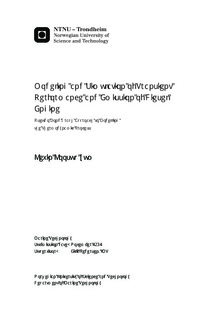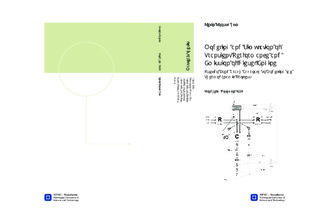| dc.contributor.advisor | Pedersen, Eilif | nb_NO |
| dc.contributor.author | Yum, Kevin Koosup | nb_NO |
| dc.date.accessioned | 2014-12-19T12:08:29Z | |
| dc.date.available | 2014-12-19T12:08:29Z | |
| dc.date.created | 2013-01-02 | nb_NO |
| dc.date.issued | 2012 | nb_NO |
| dc.identifier | 581712 | nb_NO |
| dc.identifier | ntnudaim:6754 | nb_NO |
| dc.identifier.uri | http://hdl.handle.net/11250/238340 | |
| dc.description.abstract | Internal combustion engines have been very successful as power producers in the marineapplicaiton due to their simplicity of construction, high efficiency and long track of proven technology. However, as the environmental foot print of industry is gaining more and more attention, the emission from the engine must be reduced. The main emission fromthe diesel engines are namely nitrogen oxide(NOx) and particulate matter(PM). Sulfuroxide(SOx) and carbon dioxide emission(CO2). In the marine industry, the transientemission has not been brought to the table of discussion when it comes down to theregulations. However, the assessment and improvement in the transient emission willgain more attention.In order to predict the emission from the diesel engine in the generic manner, the dynamic engine model should be developed. This model must be able to capture the in-cylinder process during the combustion in cylcle-to-cycle resolution. Transient load would put more challenges to the prediction as the in-cylinder states are far from the steady-state conditions. In the thesis, the dynamic simulation model of the diesel engine is developed in order to predict the emission. Firstly, the emission from the diesel engine, with special focus on NOx formation, is reviewed in general. Then overall process of the development of the mathmatical model of the diesel engine is described. Bond graph model was used as the framework of modeling approach. Finally the simulation result is compared with the test result from the laboratory and recommendations for further development are presented.The main contributions of the thesis are: A overall process of building the engine model of was reviewed and implemented. It covers most of the building blocks from the thermodynamic calculation to the calculation of states of the components of the diesel engine. The model developed in the project has significant improvement in terms of computational efficiency. Implementing Grill s method for the calculation of the equilibrium composition of the combustion gas was the key to this success. The bond graph model based on the multi-component gases in the combustion gases was constructed and it founded a ground for adaptation of the emission reduction strategy such as exhaust gas recirculation. The overall model was built with component libraries which can be reused in the future project. Full description of the components libraries is given so that potential users may have the easy access. A mathmatical model for NOx is coupled with the dynamic engine model together with the two-zone model approach. The calculation of the two-zone model in the absence of the pressure profile was achieved with an effective method so that calculation time has not increased significantly from the single zone model. | nb_NO |
| dc.language | eng | nb_NO |
| dc.publisher | Institutt for marin teknikk | nb_NO |
| dc.subject | ntnudaim:6754 | no_NO |
| dc.subject | MSN1 Marine Technology | no_NO |
| dc.subject | Marine Engineering | no_NO |
| dc.title | Modeling and Simulation of Transient Performance and Emission of Diesel Engine: Pseudo Bond Graph Approach to Modelling the Thermodynamic Process | nb_NO |
| dc.type | Master thesis | nb_NO |
| dc.source.pagenumber | 107 | nb_NO |
| dc.contributor.department | Norges teknisk-naturvitenskapelige universitet, Fakultet for ingeniørvitenskap og teknologi, Institutt for marin teknikk | nb_NO |

